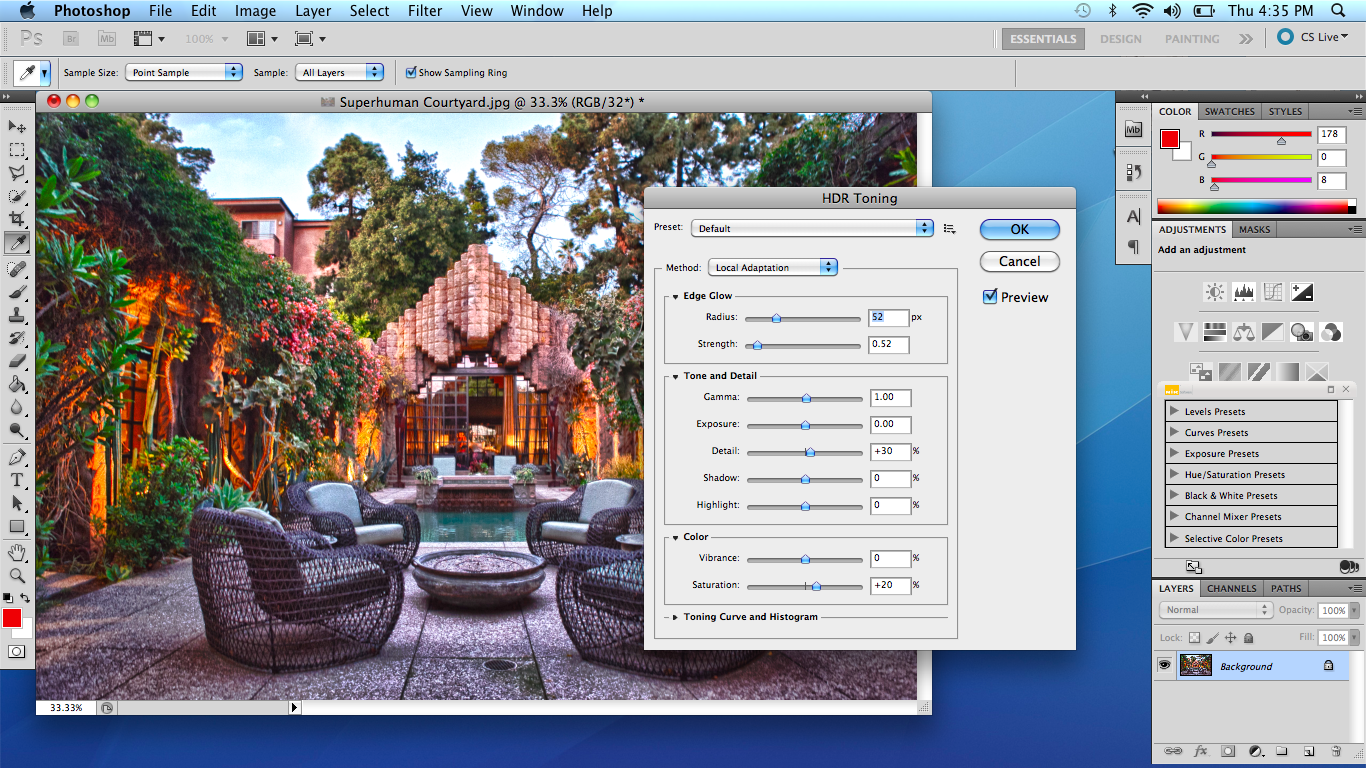Adobe Photoshop CS5 HDR Pro Review
As someone who’s been using Adobe Photoshop for a long time, I’ve been pretty (read: extremely) disappointed in the quality of their HDR capabilities. Ever since introducing the HDR tools in CS2 or 3 ( I can’t remember which) I’ve been yearning to get more out of them.
With Adobe Photoshop CS5 they released their most full featured set of HDR tools yet, but is it enough to make Photoshop the first true standalone piece of HDR software?
Let’s find out.
Workflow
The one thing that CS5 has going for it, is that just about anyone who is serious about photography already has a copy of it. That said, it’s still a pretty pricey upgrade from CS3 or 4 to the latest CS5 – and let’s be real, the HDR tools in previous versions sucked enough to make them not even worth opening.
My point in all that being, is that you can keep everything in Photoshop and not need to worry about switching around between programs.
Composing the brackets is simple enough, and the auto alignment actually appears to be a notch above Photomatix – however, the options for customizing the alignment seem to be a little bit slimmer. Pretty much a wash in terms of what’s really better in this regard.
Immediately after my image is composed, I started to feel a twinge of disappointment. There are no visual presets, which have become kind of a staple in my workflow after using Photomatix 4 and HDR Efex Pro. The presets they do have, unfortunately kind of suck and it’s taken a fair amount of time to find images that I’m actually happy with.
Performance
CS5 automatically earns points just by the fact that it’s obvious the HDR tools have improved dramatically over previous releases, and the fact it’s built into Photoshop. Alignment works well, although image creation is notably slower than Photomatix and HDR Efex on my Macbook Pro.
That said, it’s not so much about these variables, but rather how the final image looks, so how did it stack up?
Processing
After composing a few images I’ve decided that creating a spectacular HDR in CS5 is quite a bit more difficult than it is in the other programs I use. I can get by without the visual presets, but the options you do have for image adjustment, are quite a bit different than other programs, and don’t seem to work nearly as well.
That said, I’ve found that CS5 hits a bit of a sweet spot in images that look less processed. A year ago I might have been really happy about that, and found a decent place for this in my workflow, but I think HDR Efex Pro does a markedly better job than CS5 does and so I’d just head that direction were that what I was looking for.
Conclusion
I think a lot of people are going to use this software just because they already have Photoshop and therefore don’t need to spend anything else in order to create some HDR shots.
That’s totally cool, and with a little bit of practice, you’ll be able to create some great shots with the software.
That said, there are a handful of other (much less expensive) programs out there that will create much better HDR images, and do it much quicker. CS5 quickly loses the points it gained for being an all in one solution, based on the fact that the module is kind of clunky and difficult to achieve the results you want.
I’d recommend against using Adobe Photoshop CS5 as your only solution for HDR, but there is no denying the importance of Photoshop in the HDR workflow. There is not a single image I compose that doesn’t get Photo-shopped at one point or another.


[…] really weren’t sure what to expect. In an HDR world where a combination of Photomatix and Photoshop reign supreme, I was definitely curious to see how some of the lesser known HDR products would hold […]